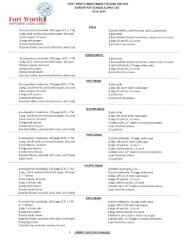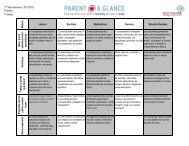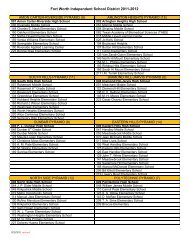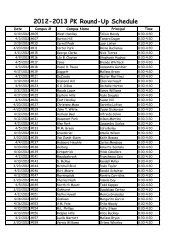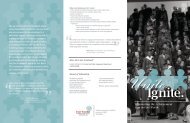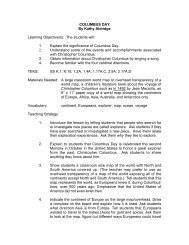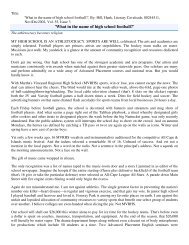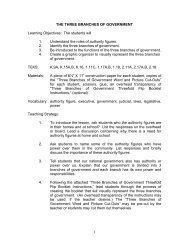Bulletin One 2012 2013 Final.pdf - Fort Worth ISD
Bulletin One 2012 2013 Final.pdf - Fort Worth ISD
Bulletin One 2012 2013 Final.pdf - Fort Worth ISD
Create successful ePaper yourself
Turn your PDF publications into a flip-book with our unique Google optimized e-Paper software.
V. Medication errors involving other FW<strong>ISD</strong> employees will be processed by the Human Capital<br />
Management Department as appropriate for the medication error.<br />
VI. The consequences of medication errors may include, but are not limited to, verbal conferences,<br />
letters of concern, letters of reprimand, or a recommendation for the termination of employment.<br />
In all instances, disciplinary action will draw upon the professional judgment of administrators in<br />
Health Services and Human Capital Management and will be correlated to the seriousness of the<br />
offense, previous actions by the employee, and the effect of the misconduct on the school<br />
environment.<br />
3.14 Guidelines for Heat Precautions<br />
I. Because children are particularly vulnerable to heat injuries, there are some simple measures that<br />
can be taken to help prevent injury and can be easily applied to the school setting.<br />
II. Ambient temperatures of greater than 90 degrees with relative humidity greater than 60% must<br />
be regarded as posing the highest risk for heat injuries. For school purposes, regard temperatures<br />
of 90 degrees or greater as highest risk regardless of relative humidity.<br />
III. Heat injury may manifest itself with the onset of mild symptoms of headache and cramps to severe<br />
alterations in consciousness with loss of body temperature regulatory mechanisms. Heat injuries<br />
may fall within one (1) of three (3) categories:<br />
A. Heat stress is the result of mild disturbances in electrolyte balance thought to be caused from<br />
excessive perspiration. Headache, muscle cramps and nausea are the typical symptoms. It is<br />
completely reversible with hydration, electrolyte replacement and rest in a cool environment.<br />
B. Heat exhaustion is seen in persons exposed to prolonged periods (several days) of excessive<br />
heat with inadequate or partial replacement of fluids and electrolytes. This can cause more<br />
serious injury to the tissues and autonomic regulatory systems. This form of heat injury is<br />
often seen in the elderly or infirmed and can precipitate cardiovascular events. Again, adequate<br />
hydration and electrolyte replacement prevent this injury.<br />
C. Heat stroke is the most serious form of heat injury and has a high case fatality rate. This results<br />
from overwhelming the body’s ability to cool itself leading to an elevated core temperature of<br />
greater than 105 degrees F. The surface of skin can often feel cool and dry to the touch. Initial<br />
symptoms in persons suffering heat stroke may be headache and nausea rapidly followed by<br />
confusion and coma.<br />
IV. All heat injuries are preventable! Adequate hydration prior to and during heat exposure is critical.<br />
In prolonged exposures, electrolyte replacement must be addressed. Because a mere 15 minutes in<br />
the Texas sun can lead to a heat injury, we must take prevention seriously. The following<br />
measures need to be adhered to at all times:<br />
A. Have the children drink water before going to P.E. and recess. (1-2 cups if possible)<br />
B. After P.E. and recess, prior to going back to class, the children should drink additional water.<br />
C. Classrooms should be cool. Fans blowing warm air can actually lead to increased numbers of<br />
12-13 SY <strong>Bulletin</strong> Number <strong>One</strong> 56 Revised: 10/9/<strong>2012</strong>





